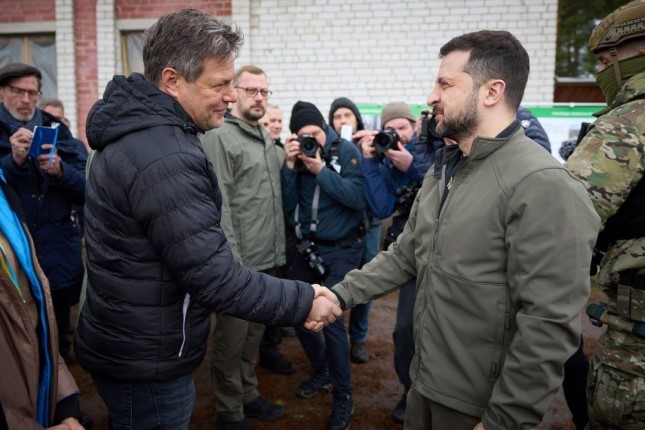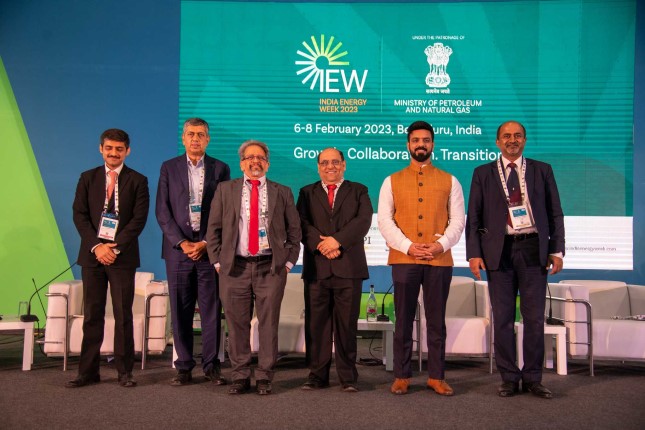2020 sales of Top 100 weapons manufacturers totalled USD 531 billion (EUR 469 billion). However, new providers, including Global South countries, are beginning to play an increasingly greater role in this market, accounting for more than 15% of the total trade volume. Whereas for the last hundred years, they had been primarily importing military technologies from the Global North, the situation is gradually changing as we speak. As an example, India now has three companies in the top 100 with a combined share of sales volume of 1.2%, which is on par with South Korea. China's share is 13%.

While the volume of arms exports by emerging suppliers is lower than that of established vendors, they can still directly impact the state of global and regional security. Among these new vendors are countries such as India, Brazil, South Korea, Turkey, and the United Arab Emirates. They have demonstrated several different approaches to developing their weapons industries from the ground up and establishing the capacity to play a prominent role regionally, if not globally.
Their products are acquired mainly by relatively poor countries in Africa, the Middle East, and Asia. Smaller weapons manufacturers have been able to increase their market share noticeably by taking advantage of growing tensions in these regions that contribute to boosting demand for weapons. On top of that, they have been able to present an alternative to more expensive US-made military equipment that comes with an added political cost. As a result, as the US' share of the global arms market was shrinking from 40% in the late 1990s to about one-third now, the void that this left has been gradually filled by minor arms manufacturers.
India's top weapons manufacturers make an average of over USD 6 billion annually, accounting for more than 1.2% of the total global arms trade volume. India's exports of military equipment have quintupled in five years. Apart from the favourable situation in the global market, this growth was facilitated by the Indian government's strong measures to support this industry. The country's BrahMos supersonic cruise missile is one of the most sought-after products in the neighbouring countries. It is being eagerly purchased by the Philippines, Vietnam, Indonesia and other countries in the region.
Furthermore, as one of the world's strongest nations in IT, India is among the leaders in manufacturing the most advanced and sophisticated types of weaponry. The country is known to be developing AI that can be deployed on the battlefield, as well as unmanned fighting robots and systems for analysing human behaviour and predicting the situation on the battlefield. Over the past few years, these types of IT solutions have experienced a surge in demand, which can explain the strong growth of capitalisation of India's Bharat Electronics Corporation and other companies involved in developing such solutions.
The United Arab Emirates has been one of the world's most active arms importers for many years. That said, the UAE has been able to home in on a model of cooperation with the largest weapons sellers that eventually enabled the country to develop its own export capabilities. As part of this model, when awarding contracts that are worth many billions of dollars, making them very profitable to sellers, the UAE insisted on including a clause stipulating that some components would have to be manufactured domestically, thereby facilitating the transfer of technologies from the United States, the EU, Canada, and Brazil. Combined with lavish government funding for R&D and the country's manufacturing industry, this helped the UEA quickly beef up its export capacity.
The UAE's largest weapons manufacturer is EDGE Corporation, which sells, on average, some USD 4.8 billion worth of arms to Africa and the Middle East annually. Over the past ten years, two-thirds of all equipment sold by the UAE have been comprised of armoured vehicles. About a quarter of its exports are represented by aircraft, some of which are manufactured domestically while others are purchased abroad and then resold. In recent years, the UAE has been enhancing its capacity to produce high-tech air defence systems, including the SkyNight system, designed to intercept UAVs and helicopters, a capability that would come in extremely handy in today's warfare.
Unmanned aerial vehicles (UAVs) have become a hallmark of Turkey's defence industry in recent years due largely to the success of Bayraktar TB2, a large drone manufactured by Baykar Corporation, whose technical director Selçuk Bayraktar is married to President Erdogan's daughter. Sold to 24 countries, Bayraktar TB2 is the most exported drone in the world. However, Baykar Corporation relies heavily on imported components, which may limit the company's ability to sell drones to some countries.
Ten years ago, Turkey's defence aircraft industry sold USD 3.7 billion worth of hardware. Currently, its sales are nearly USD 7 billion, mainly fueled by domestic demand but also supported by exports estimated at USD 2 billion. Turkey is now among the world's top twenty weapons and military equipment suppliers. Interestingly, the US contributed to Turkey's rise as a major weapons exporter. When Washington imposed an embargo on arms sales to Turkey in the mid-1970s, Ankara had no option but to speed up the development of its defence industry. In addition to UAVs, Turkey now makes armoured vehicles (about 50% of arms exports), artillery systems, training planes, various electronic warfare systems, and warships of different classes, including frigates (about 30% of arms exports).
Turkey and the UAE export arms not only to make money but also to project their geopolitical influence. Generally, countries that import weapons should work with exporters over a long period of time in terms of maintenance, procurement of ammunition and spare parts, and personnel training. For example, Ankara has used this approach to improve relations with the Turkic-speaking states of Central Asia.
South Korea also began developing its defence industry after the US restricted Seoul's access to military technology. Today, 46% of South Korea's arms exports go to Southeast Asia and Oceania, where South Korea competes with India. Other importers of South Korean military technology include countries in the Middle East (29% of exports), the EU (17%) and South America (8%). Weapons made by South Korea are in demand even among developed Western countries, primarily due to the high quality of South Korean weapons systems.
The K-9 Thunder, a 155 mm self-propelled howitzer, is South Korea's top-selling weapons system. Originally designed for the national armed forces to contest North Korean equipment, K9 has also appealed to many buyers abroad. Artillery now accounts for an average of 24% per cent of all arms export revenues. South Korea also exports warships (47% of all arms sales) and aircraft (27%). The country's government encourages investment in R&D, offering tax breaks to companies involved in the defence industry.

K9 Thunder is a modern South Korean 155-mm self-propelled artillery mount (ACS) of the self-propelled howitzer class. Photo: wikipedia.org
Unlike South Korea, Brazil has long since set its eyes on arms sales to foreign markets. By the late 1990s, Brazil became a major supplier of armoured vehicles and training aircraft to Iraq and Libya. Then it shifted its focus to attack helicopters and warplanes. Currently, military aircraft account for more than 80% of Brazil's total arms exports. Embraer Corporation, which also produces business jets and medium-haul airliners, is Brazil's primary supplier of military aircraft.
Another distinctive feature of Brazil's defence industry is its reliance on partnerships with small contractors worldwide. For example, Brazilian companies have partnered with a South African armament manufacturing firm to produce the A-Darter, a modern air-to-air missile for the African market. Brazil works with large corporations such as Airbus to make EC725 military helicopters. Even though Brazil is far from the world's major hotspots and conflicting countries, it leverages its extensive partner network to play an important role in the global arms trade and secure access to modern military technology.
The new arms suppliers have shown how to penetrate today's highly competitive weapons market. First of all, they rely on imported technology and components, and then they gradually reduce their dependence on external supplies. Secondly, they do not go after a wide range of products but focus on certain niches where they try to achieve technical superiority. This was the case with Turkish drones, UAE missiles, and South Korean artillery systems.
In addition, the advent of new arms exporters in the market has changed the balance of power, increasing competition and forcing sellers to offer more favourable terms to their buyers. Finally, the new suppliers of weapons also have a substantial impact on regional security.

































